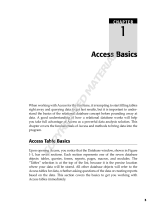
i
Table of Contents
Chapter 1: Where Do I Start?............................................................................... 1
Using this Document........................................................................................ 1
Follow Our Examples....................................................................................... 2
Setup Cycle – What do I do first? .................................................................... 4
What is an Inventory Item? .............................................................................. 5
What is a Non-Inventory Item? ........................................................................ 5
What is a Barcode? ......................................................................................... 5
Designing and Labeling Sites and Locations................................................... 7
What is a Site? ................................................................................................ 9
What is a Location? ......................................................................................... 9
Barcodes Best Practice ................................................................................. 10
How Should I Label My Items? ...................................................................... 11
Identifying Additional Tracking Needs............................................................ 12
How do I use my Handheld Device?.............................................................. 13
Chapter 2: Getting Started.................................................................................. 16
Step 1: Setup Users and Assign Security Privileges...................................... 16
Step 2: Enter Your Company Information and all Shipping/Receiving
Addresses...................................................................................................... 19
Step 3: Enter or Import Your Sites and Locations.......................................... 20
Step 4: Create Location Labels for Scanning ................................................ 24
Step 5: Enter or Import Your Suppliers.......................................................... 25
Step 6: Enter or Import Your Items ................................................................ 27
Step 7: Create Item Barcode Labels for Scanning......................................... 29
Step 8: Add Inventory to Your Items.............................................................. 30
Chapter 3: Importing Data into InventoryControl ................................................ 34
Getting Information From a Different Application........................................... 34
Import Order .................................................................................................. 35
How to Imp ort into InventoryControl .............................................................. 36
Mapping Your Data........................................................................................ 37
Importing Tracked By Information.................................................................. 38
Importing Inventory........................................................................................ 38
Handling Import Errors................................................................................... 39
Common Import Questions............................................................................ 40
Chapter 4: Working with Mobile Devices............................................................ 44
Getting Started Using a Mobile Device .......................................................... 44
Step 1: Send the InventoryControl Program to the Device ........................... 45
Step 2: Create a Mobile Version of the Database.......................................... 46
Creating Databases using Filters.............................................................. 46
Step 3: Send the InventoryControl Database to the Device........................... 47
Sending Updates to a Mobile Device ........................................................ 4 7
Retrieving Information from a Mobile Device ............................................ 48
Common Mobile Devices Questions.............................................................. 50
Chapter 5: Auditing Your Inventory .................................................................... 52
What is an Audit? .......................................................................................... 52
Why Audit? .................................................................................................... 52
























